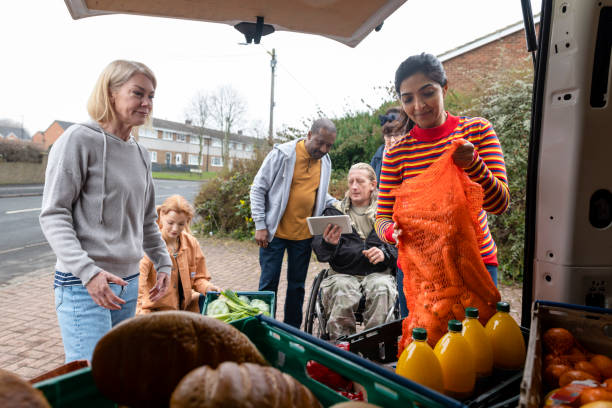Why Our Mobile Pantry is a Game-Changer for Food Insecurity
In today’s world, food insecurity is a challenge faced by communities across the globe. Millions of families struggle to put food on the table, and as a result, their health and well-being are compromised. This unfortunate reality impacts not only individual households but the fabric of communities at large. To meet this challenge, innovative solutions such as mobile pantries are revolutionizing access to nutritious food for those in need.
What is Food Insecurity?
Food insecurity is the lack of consistent access to enough food for an active, healthy life. This issue affects people from various backgrounds. It primarily impacts low-income families, seniors on fixed incomes, and individuals experiencing unemployment. In many cases, food insecurity is not about the absence of food. But rather the barriers to accessing it, such as high costs, transportation challenges, or living in food deserts where grocery stores are scarce.
According to the U.S. Department of Agriculture’s (USDA) research, one in 10 households in Hampton Roads experience food insecurity. This statistic shows the urgent need for innovative solutions to bridge the gap between food availability and those who need it most. Mobile pantries are emerging as a vital tool in this effort, providing so much more than food—hope and community support.
The Mobile Pantry New Wave
Mobile pantries are a new way to distribute food directly to communities instead of relying on fixed locations. Using trucks stocked with fresh produce, dairy, proteins, and pantry staples, they serve underserved areas and remove barriers to access.
Community-cooperative mobile food pantries provide food and give recipients the freedom to choose, allowing them to “shop” from the truck like in a grocery store. This empowers families by giving them options and helping maintain a sense of normalcy and control.
The Foodbank of Southeastern Virginia and the Eastern Shore launched their staple mobile pantry program many years ago to tackle food insecurity head-on in the region. This initiative focuses on delivering nutritious food directly to neighborhoods that need it most, especially during times of heightened demand due to economic challenges and the lasting impacts of the COVID-19 pandemic. Since this program existed even before the pandemic, we didn’t have to make any critical adjustments since there were already accessible drive-thru models.
The mobile pantry has reached thousands of families by partnering with local agencies and community organizations, providing them with essential food items and resources. The program addresses immediate hunger and brings together the community by encouraging local residents to connect and support each other.

Positive Impact on Food Insecurity Rates
Mobile pantries have majorly helped lower food insecurity in many areas by tackling the logistical issues that make it hard for people to get food. Through mobile pantry distribution, fewer households face hunger.
Also, mobile pantries enrich community well-being by connecting food providers, volunteers, and recipients in solidarity and shared purpose.
How to Get Involved with Mobile Pantries
Individuals and communities can get involved with the local mobile pantries in several ways. Volunteering time for food distribution and logistics or raising awareness about food insecurity is a direct way to help.
Donating food is also impactful, as it supports operations and creates a steady supply of nutritious food. Many mobile pantries rely on community donations for sustainability.
Mobile pantry food banks are a game-changer in addressing food insecurity. They offer flexible, accessible, and dignified food options for those in need. They bring nutritious meals directly to underserved areas, breaking down barriers and channeling community support from all kinds of people and organizations. Visit our website for more information on the Foodbank’s initiatives and resources.